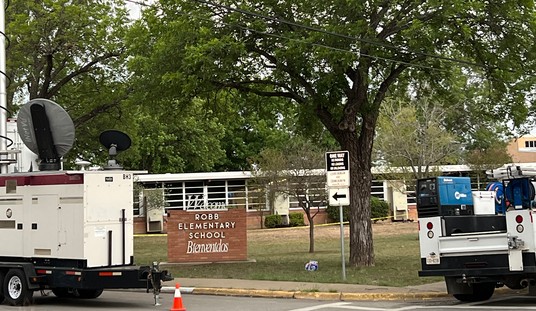Hurricane Michael has come and (thankfully) gone, moving far more quickly than the last such strike on U.S. soil. While we’ve grown used to many “false alarms” in terms of precisely how bad approaching storms may be, Michael overperformed by a significant margin. The town of Mexico Beach, Florida, previously home to less than 2,000 year-round residents, has been effectively wiped off the map. Yesterday the news grew even worse as rescue teams discovered the first body of someone who didn’t make it out of town. (Associated Press)
Search and rescue teams have found a body in the Florida Panhandle town nearly wiped out by Hurricane Michael, and authorities said there is little doubt the death toll will rise further.
The tally of lives lost across the South stood at 14, including the victim found in the rubble of Mexico Beach.
Miami Fire Chief Joseph Zahralban, leader of a search-and-rescue unit that entered the devastated community, said: “We have one confirmed deceased and are working to determine if there are others.”
This grim news came on the heels of the announcement that eleven year old Sarah Radney, who had been safe inside her grandparents’ Georgia home, was killed by storm debris that had come crashing through the roof. This brings the death toll thus far to slightly more than a dozen. While we can hope for the best, search and rescue teams fear that there are more bodies to be recovered. It’s difficult to pin down an expected number yet because most of the affected area is still without cell service. The storm wiped out the region’s infrastructure.
But even in a worst-case scenario, one FEMA spokesperson expressed hope that the final death toll may remain below one hundred. That would be fairly amazing because, by any normal measure, Michael was very nearly the perfect confluence of bad possibilities. The evening before the storm struck, many people went to bed hearing that it was still a Category 2 hurricane. That’s still nothing to sneeze at, but many of the buildings along the panhandle were built to withstand those levels of winds. Too many people were in areas that were only under evacuation advisories, not mandatory orders. The winds wound up being only slightly short of a Category 5 storm and the storm surge hit a stretch of coast that’s barely above sea level with little to slow the advance of the water or dampen the winds.
If the final death toll remains below 100, that’s going to seem like a miracle compared to some other large storms in recent memory. I previously wrote about the politics of calculating hurricane deaths and how the numbers can be inflated by including people who died months after the storm has passed. The actual number of people who died because of Michael isn’t known yet, but those unfortunate souls are already dead. It’s just a question of locating and identifying the remains at this point. Anyone who passes away in the weeks and months to come will have fallen to secondary or even unrelated effects.
If the body count remains as low as is currently expected, it will be because Michael hit a modern, developed region with established infrastructure, solid communications, experience in dealing with storms and a disaster prevention plan in place. Many of the buildings, particularly the shelters, were built to withstand that type of punishment and people received enough warning to plan ahead, stock up provisions and seek the safest location possible.
In short, as bad as Michael was and as fast as it grew, the storm still didn’t have the element of surprise. Rescuers and road crews were already stationed as close as possible, ready to leap into action as soon as the winds decreased sufficiently. This is how you deal with a storm of that magnitude. Compare that to the preparations, infrastructure, and resources available in Puerto Rico when Hurricane Maria hit and it’s not a mystery as to why they lost so many more people. Rather than assigning blame for those who were still tragically lost in this latest storm, we should be pointing to the Florida panhandle as an example for others to follow. As bad as it looks right now, it could have been many orders of magnitude worse.







Join the conversation as a VIP Member